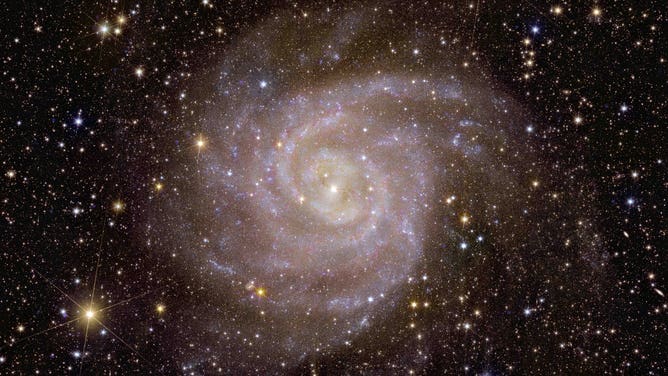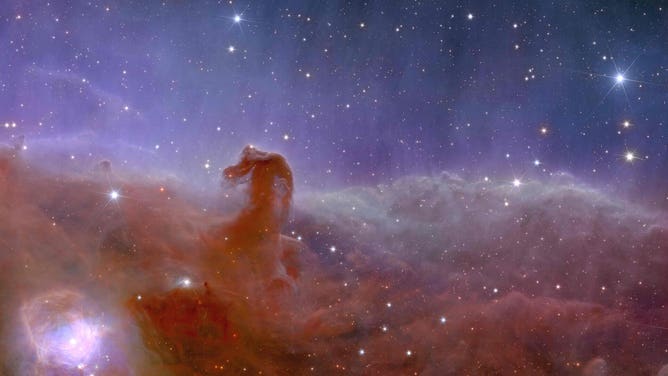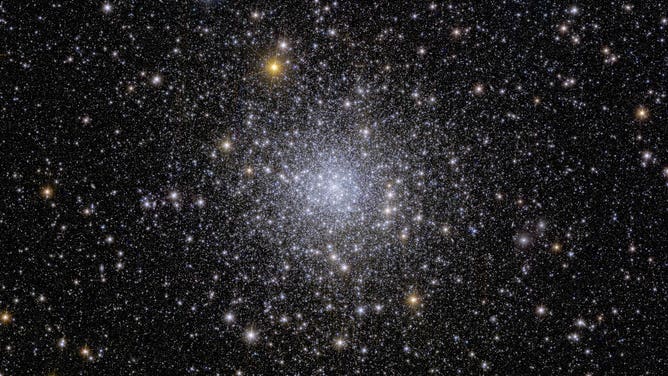Euclid telescope, Europe's dark-matter detective, takes first images revealing deepest edges of our Universe
Throughout its mission, Euclid will create a 3D map of one-third of the sky, viewing its evolution over 10 billion years in an effort to uncover why the Universe's expansion is accelerating.
Euclid telescope's first color images show dazzling edge of darkness
The European Space Agency released the first full-color images taken by the Euclid telescope, a new spacecraft designed to study dark matter. (Video credit: ESA/Euclid/Euclid Consortium/NASA, image processing by J.-C. Cuillandre (CEA Paris-Saclay), G. Anselmi)
Euclid, European Space Agency's dark-matter investigating telescope, has taken some of its first color images revealing the dark edges of the cosmos.
Using visible and infrared light, ESA's Euclid space telescope is hunting for dark energy, which refers to the mystery cause of the expansion of the Universe, and dark matter, the name of what causes the growth of cosmic structures. To achieve this, Euclid will create a 3D map of one-third of the sky, viewing its evolution over 10 billion years.
The telescope launched on a SpaceX Falcon 9 rocket from Florida in July, beginning the journey to peer back into galactic history and uncover why the Universe's expansion is accelerating.
Over the summer, ESA released the first test images Euclid took in its final orbit, about 1 million miles away from Earth, showing stars and galaxies.
TELESCOPE USED TO STUDY MYSTERIES OF THE UNIVERSE RELEASES FIRST IMAGES IN STUNNING DETAIL
Now, ESA said the telescope is ready to uncover the secrets of the cosmos. To mark the beginning of science operations, the European Space Agency released the first full-color images taken by the spacecraft, putting its unique capabilities to capture vast areas of the sky on full display.
"We have never seen astronomical images like this before, containing so much detail," ESA’s Euclid Project Scientist René Laureijs said. "They are even more beautiful and sharp than we could have hoped for, showing us many previously unseen features in well-known areas of the nearby Universe. Now we are ready to observe billions of galaxies, and study their evolution over cosmic time."
Euclid has two instruments: a visible-wavelength camera known as the VISible instrument and the Near-Infrared Spectrometer and Photometer known as NISP.
Using its near-infrared instrument, Euclid was about to capture the sharp image below of what's known as the "hidden galaxy" because it's located in a crowded disc of the Milky Way, usually obscured by dust, gas and stars.

Euclid telescope view of spiral galaxy IC 342. (Image: ESA)
(ESA)
One of the most colorful images of the release was taken of the Horsehead Nebula, a stellar nursery. ESA said the incredibly detailed image was taken in about one hour, showcasing the spacecraft's ability to quickly capture unprecedented details of a large area of the sky.
SEE THE ‘WHIRLWIND’ OF IMAGES TAKEN DURING JAMES WEBB SPACE TELESCOPE'S FIRST YEAR

Euclid telescope view of Horsehead Nebula. (Image: ESA)
(ESA)
It's estimated dark energy makes up 70% of the cosmos and dark matter is 25%, meaning we don't fully understand 95% of what makes up the mass of our Universe. Globular clusters, like the one below, are considered some of the oldest objects in the cosmos and possibly contain dark matter.
These features are particularly hard to observe because the center of a globular cluster contains many bright stars that can "drown out" fainter ones.

Euclid’s view of globular cluster NGC 6397 (Image: ESA)
(ESA)
Euclid Consortium scientist Davide Massari of the National Institute for Astrophysics in Italy said Euclid is the only telescope capable of imaging an entire globular cluster in such detail, including faint stars.
"We expect all of the globular clusters in the Milky Way to have them, but so far, we have only seen them around just a few," Massari said. "If there are no tidal tails, then there could be a dark matter halo around the globular cluster, preventing the outer stars from escaping. But we don’t expect dark matter haloes around smaller-scale objects like globular clusters, only around bigger structures like dwarf galaxies or the Milky Way itself."
In the coming months, the Euclid Consortium of scientists will continue to analyze these images, resulting in likely discoveries about the Universe.
According to the ESA, Euclid will map the sky over six years, with new data available once a year.


